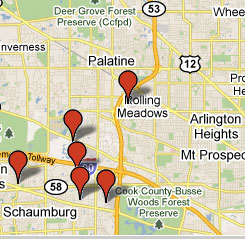By: John Shepler
Fiber optic internet service is becoming increasingly essential for modern businesses, but not everyone has access to it. Some businesses don’t need the high speeds fiber offers and are content with slower options. Others might have outdated perceptions of fiber’s affordability. Many are unaware that fiber might already be available in their building or nearby.
Fiber optic internet isn’t the niche product it once was. Even consumers are demanding fiber to their homes for streaming and entertainment. Businesses transitioning to cloud-based systems are finding that their old internet connections are no longer sufficient. Only fiber delivers the speed and reliability necessary for efficient cloud service utilization. Industries like video production and medical imaging, which handle large files, find fiber practically indispensable.
So how can businesses obtain fiber optic service affordably? Begin by investigating existing availability. If a building already has fiber optic lines installed and connected, it’s considered “lit.” A lit building almost guarantees the availability of fiber optic service. The most expensive part, the physical installation of the fiber optic cable from the provider’s hub to the building, has already been completed.
Unlike traditional copper wiring, even a single optical fiber possesses enormous capacity. Currently, 10 Gbps is standard, but this can be amplified using multiple lasers transmitting data on different wavelengths through the same fiber. This technique is called DWDM, or Dense Wavelength Division Multiplexing. It’s even possible to lease an entire wavelength for a dedicated, private connection with maximum capacity.
More commonly, businesses opt for a lower-tier service standardized under SONET (Synchronous Optical NETwork) or Ethernet over Fiber (EoF). These services offer a portion of the fiber’s total capacity at a reduced cost. Bandwidth can be acquired cost-effectively, starting as low as 10 Mbps for EoF, and easily scaled up to 100, 1,000 Mbps, or even 10 Gbps.
It’s important to note that lit buildings typically have a single fiber provider servicing the entire building. Identify this provider and explore their service offerings.
What if your building isn’t connected to fiber yet? This is surprisingly common, even today. In this case, determine which buildings closest to yours have fiber connections. The cost of installing fiber increases with distance, making it significantly cheaper to connect to a nearby building than one farther away.
Buildings with fiber service are considered “on-net.” Those without are “off-net.” As you might expect, a price difference exists between these two categories. Buildings that are off-net but close to an on-net building are classified as “near-net.” Near-net buildings are in a favorable position as getting fiber to them is generally very feasible.
While this all makes sense, determining your building’s fiber status and the providers involved can be challenging. Traditional methods like phone calls or internet searches can be time-consuming and yield incomplete information. Fortunately, specialized search tools streamline this process by pinpointing available fiber optic services at any location.
One such tool is the patented Telarus GeoQuote software, accessible for free. By inputting your business address, the system scans its database and generates a map and list of nearby fiber optic locations. This automated system is accessible 24/7 from any web browser. There’s no obligation to use their services, but telecom brokerage consultants are available to provide current competitive pricing for your location. The only limitation is that this service is exclusively for businesses and not residential addresses.
Ready for a pleasant surprise? Check your business location for available fiber optic services. You might uncover options you weren’t aware of, even if you’ve researched recently.


